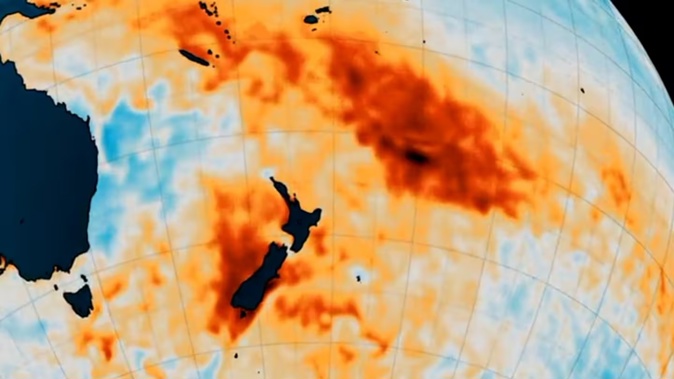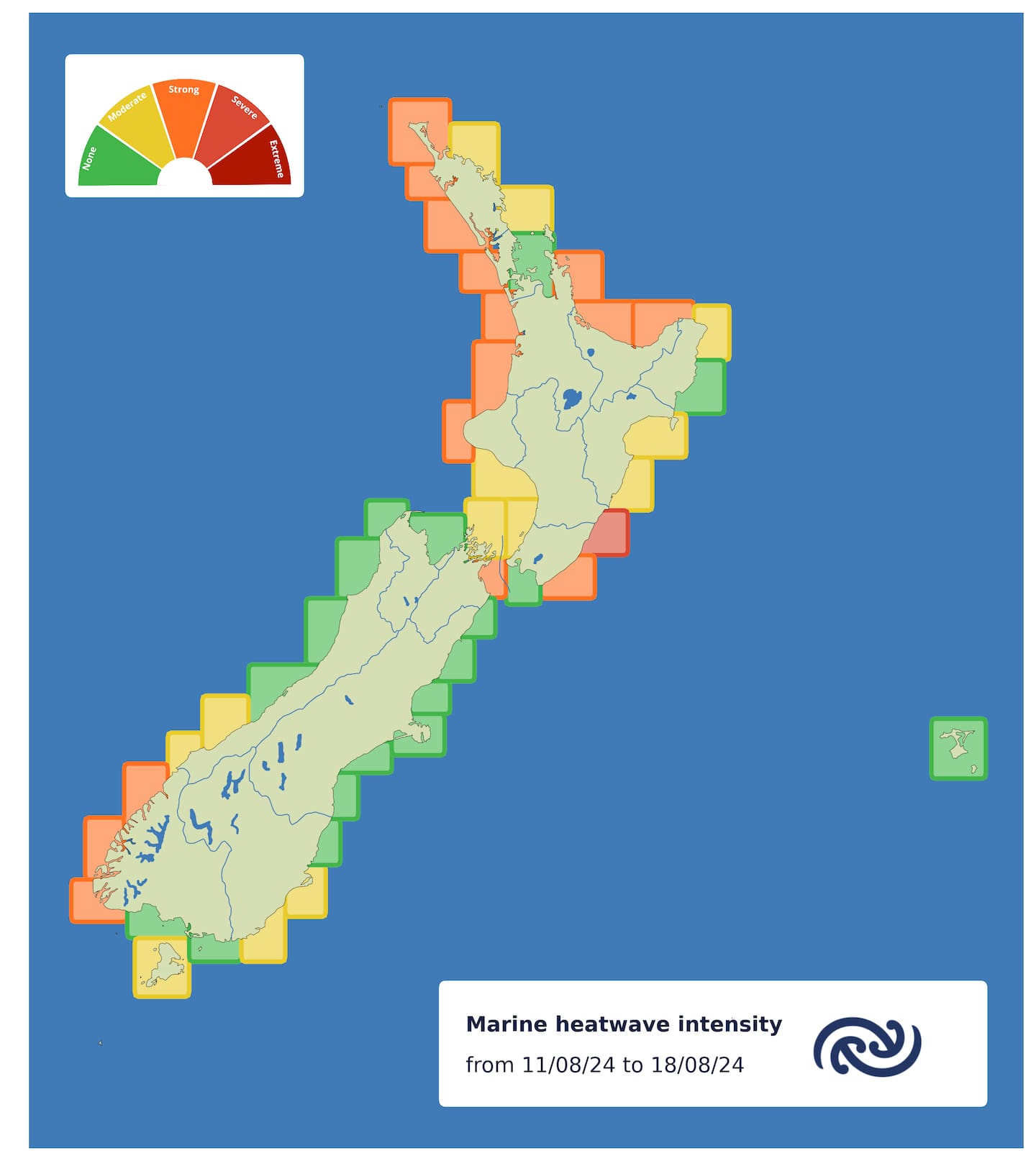
New Zealand’s waters are again expected to simmer this summer, as a new study warns that worsening marine heatwaves could push a major pillar of our sea life past a critical tipping point.
Marine heatwaves – prolonged periods of abnormally high sea temperatures - have been a constant feature around our coasts over the past decade, and scientists say they’re growing longer, stronger, and more frequent as our planet warms.
Even in the depth of winter, moderate to strong heatwaves are being observed right now off most of the North Island’s shores.
It’s something that Niwa meteorologist Ben Noll expects to see even more of over summer, with another La Nina climate pattern likely to form over coming months.
“We’ve seen with the last couple of La Nina episodes that, more frequently than not, they’re coming with marine heatwaves.”
Current modelling picked a range of marine heatwave scenarios for later in the year, from moderate to severe.
“That’s all going to become clear later in the year – but the early signal is that we do need to be prepared for another event.”
Over a run of back-to-back La Nina years that began in 2020, 100-day plus marine heatwaves occurred in all of New Zealand’s coastal regions.

This image shows forecast marine heatwave conditions around New Zealand for the next seven days. Image / Moana Project
While warmer seas might sound welcome to beachgoers, marine heatwaves have helped drive glacier melts, extreme deluges – and a cascade of damaging impacts beneath the surface.
That’s included mass salmon die-offs in the Marlborough Sounds, disruption to multiple species’ feeding and breeding patterns, and a mass sponge bleaching event in Fiordland that proved to be the worst ever documented.
Scientists have also observed the dramatic toll wrought on our kelp forests: recently wiping out nearly all bull kelp in the West Coast’s Punakaiki Marine Reserve, and native kelp in Lyttelton Harbour.
Victoria University researcher Imogen Bassett said kelp forest cover had been declining globally, as oceans gradually warmed with climate change.
“Marine heatwaves can be particularly devastating for kelp, as the water temperatures rise so fast during heatwaves that the kelp don’t really have a chance to adapt.”
That was particularly a worry for the health of our near-shore marine ecosystems, for which kelp forests provided a habitat and food for a remarkably diverse range of animals.
Giant kelp was especially important, as it could support up to twice as many fish when compared to other kelp species.
“They create a three-dimensional habitat that no other kelp species can simulate,” Victoria University marine scientist Dr Christopher Cornwall said.
“They’re extremely large in size, they grow quickly and they alter the chemistry of the water: they essentially create their own sort of environment.”
Bassett said losing these forests could bring huge declines in other iconic species such as pāua, kina and mararī/butterfish.

Kelp forests provide a habitat and food for a remarkably diverse range of animals. Photo / Vincent Zintzen
Being a mostly cold-water species, giant kelp was particularly vulnerable to heatwaves – and there was already evidence to show that its local habitats had been declining because of them.
Now, Bassett and fellow researchers have been able to show temperature thresholds at which the species began to die.
Using kelp grown from material collected in Wellington’s Scorching Bay, the team simulated marine heatwave conditions in saltwater tanks set to different temperatures.
At 18C and 20C for weeks, the kelp growth rate was slowed, but it was able to later recover.
At 22C, however, half the kelp died, amid “massive declines” in growth and tissue damage.
Currently, marine heatwaves within the giant kelp’s habitat range in New Zealand – Wellington and further south – didn’t often reach that temperature.
“But climate modelling has suggested that heatwaves exceeding that temperature could become much more common within this century if we don’t reduce our greenhouse gas emissions,” Bassett said.
“As a result, our kelp forests could become much more susceptible to heatwaves if sea temperatures continue to rise.
“Giant kelp could eventually be pushed out of the northern parts of its range if extreme heatwaves become too frequent for the kelp to persist.”
She and her colleagues were now aiming to find out how kelp populations from different regions were being affected – and what might be done to improve their resilience.
“Confronting climate change is essential if we want these forests, and the ecosystems that they support, to continue to thrive.”
Jamie Morton is a specialist in science and environmental reporting. He joined the Herald in 2011 and writes about everything from conservation and climate change to natural hazards and new technology.
Take your Radio, Podcasts and Music with you









